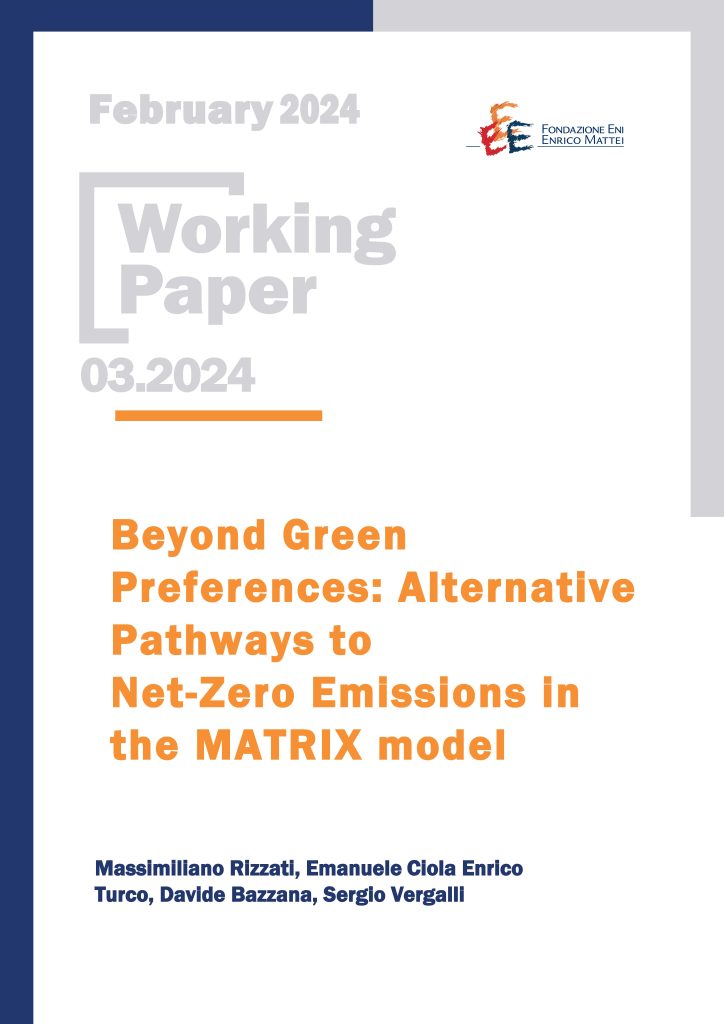Beyond Green Preferences: Alternative Pathways to Net-Zero Emissions in the MATRIX model

15.02.2024
Massimiliano Rizzati (Fondazione Eni Enrico Mattei and Department of Economics and Management, Università degli Studi di Brescia); Emanuele Ciola (Fondazione Eni Enrico Mattei and Department of Economics and Management, Università degli Studi di Brescia); Enrico Turco (Fondazione Eni Enrico Mattei and The Complexity Lab in Economics, Department of Economics and Finance, Catholic University of Milan); Davide Bazzana (Fondazione Eni Enrico Mattei and Department of Economics and Management, Università degli Studi di Brescia); Sergio Vergalli (Fondazione Eni Enrico Mattei and Department of Economics and Management, Università degli Studi di Brescia)
C63, Q52, Q58
Energy Sector, Agent-Based Models, Macroeconomic Dynamics, Climate Policy, Emission Abatement, Green preferences
Green preferences are often regarded as crucial factors in facilitating the energy transition. However, it is unclear if they can alone propel an economy towards achieving a net-zero emissions outcome. In this study, we expand the multi-agent integrated assessment model MATRIX by incorporating considerations on implicit emissions in the decision-making process of consumers and firms. To evaluate the efficacy of those green preferences, we construct a range of experiments encompassing varying degrees of pro-environmental attitudes. Those scenarios are then compared to more conventional incentive-based climate policies, such as a carbon tax and a Cap-and-Trade mechanism, with and without a subsidy for abatement technology, each implemented at different stringency. Our findings indicate that only exceptionally high and unrealistic values of green preferences for both firms and consumers can achieve a net-zero outcome in the absence of an active policy. Moreover, the most favorable scenario in terms of environmental, economic and distributional outcomes emerges from a carbon tax accompanied by a moderate subsidy. Without subsidy, policies entail mainly negative economic and distributional consequences as firms transfer the increased costs to consumers.
***
Suggested Citation: M. Rizzati, E. Ciola, E. Turco, D. Bazzana, S. Vergalli, ‘Beyond Green Preferences: Alternative Pathways to Net-Zero Emissions in the MATRIX model’, Nota di Lavoro 03.2024, Milano, Italia: Fondazione Eni Enrico Mattei
